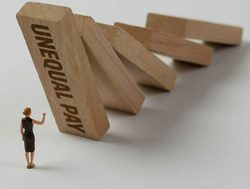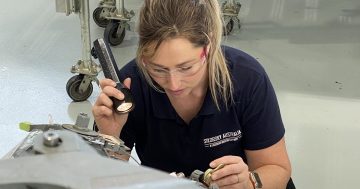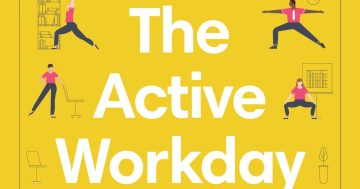The Australian National University Communications & Engagement team* say a new study has found the way heterosexual share time isn’t equal.
 Men appear to “borrow” free time from their female partners to keep up their exercise but women don’t get the same time in return, according to new research from The Australian National University (ANU).
Men appear to “borrow” free time from their female partners to keep up their exercise but women don’t get the same time in return, according to new research from The Australian National University (ANU).
The study analysed data from 7,000 households made up of heterosexual couples aged 25-64, examining how they share time.
The researchers found a woman’s day had “no give” for exercise, but men’s time was “elastic”, no matter how long the males and females worked.
“This is one of the first studies to show how, hour for hour, women’s time for their health is being squeezed to manage their jobs and the family, whereas men’s time for jobs and health is more protected,” author and ANU Professor Lyndall Strazdins said.
“We found women’s working time is rigid – it has no give whereas men have elasticity in their days, even when they work longer hours.
“This is a major problem for women’s health and fitness.
“Every hour a woman works takes away from her free time but that doesn’t happen to male counterparts.
“Men work long hours and seem to borrow time from their female partners to fit in exercise.
“Even when a man in a couple increases the hours they work they are able to preserve time to exercise, but when a woman works more, she gives up her time to exercise.
“This suggests men are borrowing their time from the women in their lives.”
Overall 34 per cent of the coupled men were physically active – meaning more than three moderate or intensive physical activities for at least 30 minutes per week.
Women were less physically active than men, with only 28.6 per cent of coupled women finding time for the same amount of regular exercise.
Women’s physical activity further reduced when either their family commitments or paid workhours increased and their work hours were also less flexible.
“Men having more time for exercise and more flexibility in their work time is playing out in women’s bodies,” Professor Strazdins said.
“Women are giving their health and wellbeing to their male partners.”
The study found if women increase their work time by 10 hours per week, or two hours per day, only 22.6 per cent are likely to be physically active.
In contrast, when men increase their paid work time by 10 hours per week, the number of men who are physically active only reduces by two per cent – to 32 per cent.
The study also found men are likely to increase their physical activity when the working hours of their female partners have more flexibility.
ANU co-author Dr Tinh Doan said: “When men work long hours it appears to have no impediment on their physical activity, nor do the hours worked by their female partners.”
Professor Strazdins said that public health efforts to increase exercise need to address the very different circumstances women face with work-life balance, and take gender inequality much more seriously.
“There is currently a global exercise drought, and this is pushing huge disease burdens from the cardiovascular to the cognitive.
“We need to cap work hours on the job, and even the sharing of care hours in the home, for men and women to both have enough time for staying healthy,’” she said.
*The Australian National University is a world-leading university in Australia’s capital.
This article first appeared at anu.edu.au.











